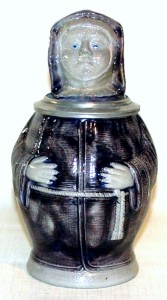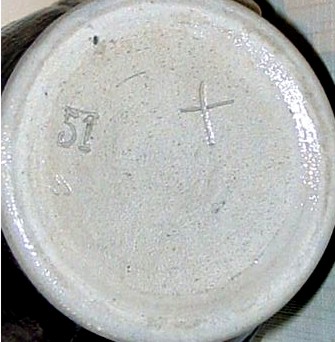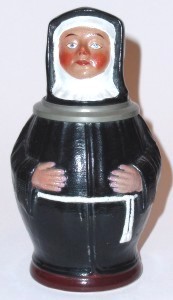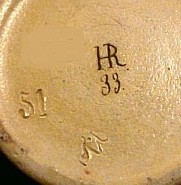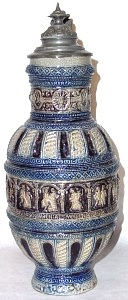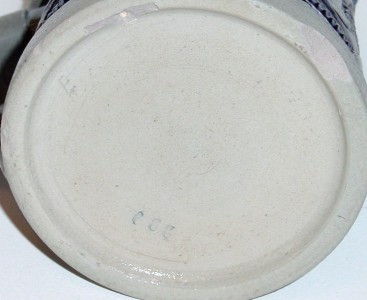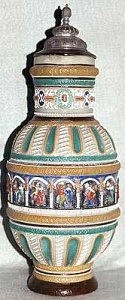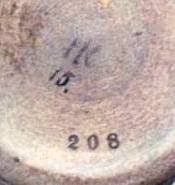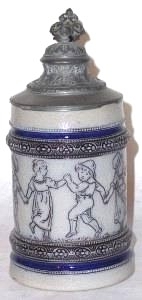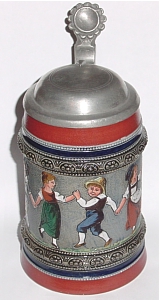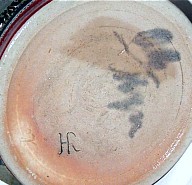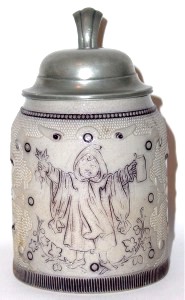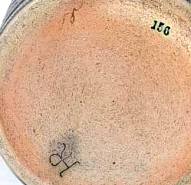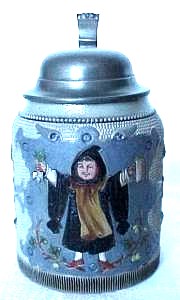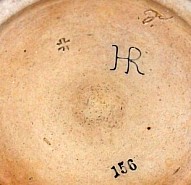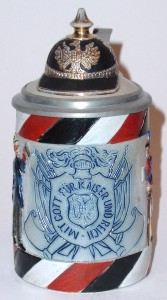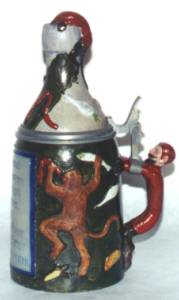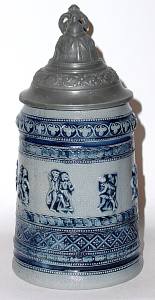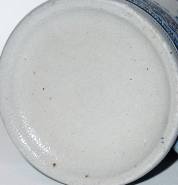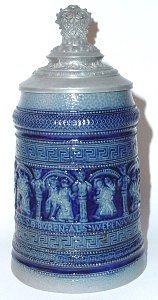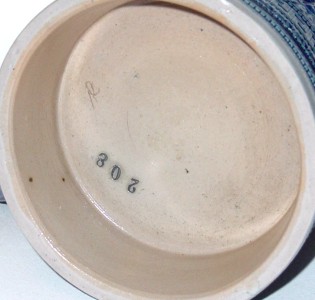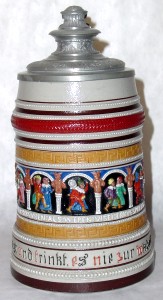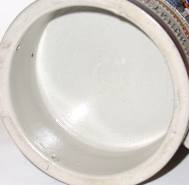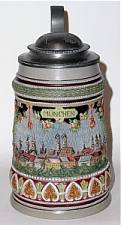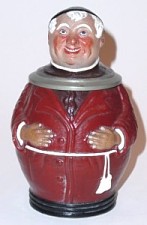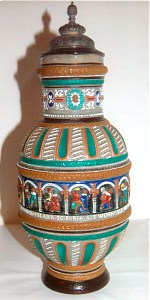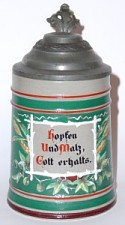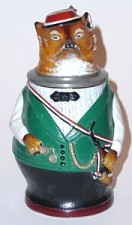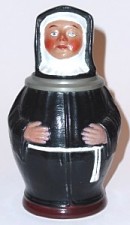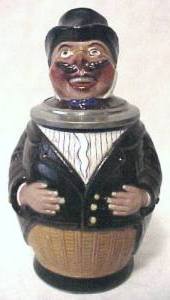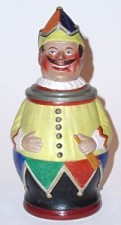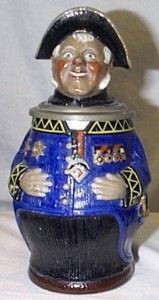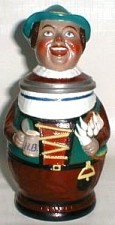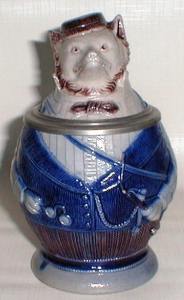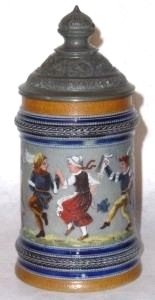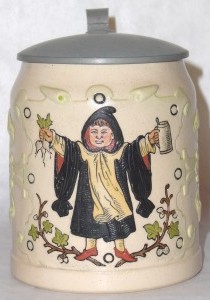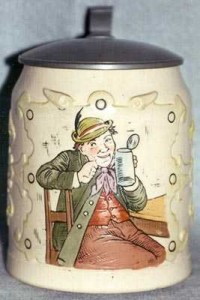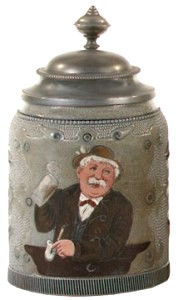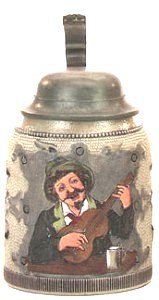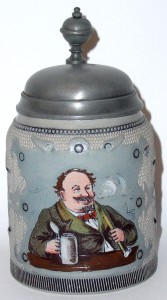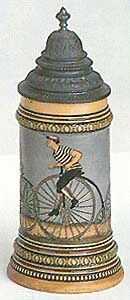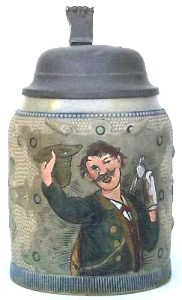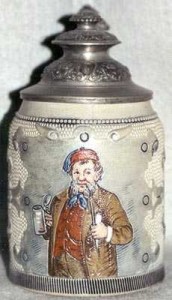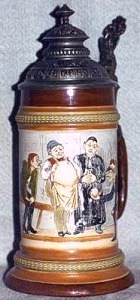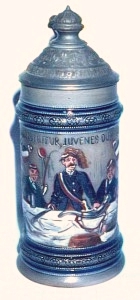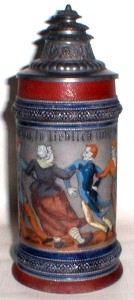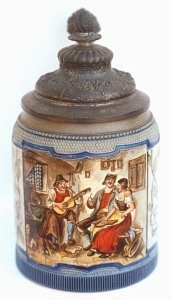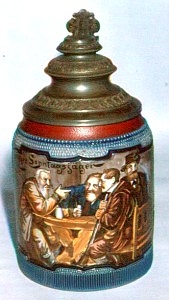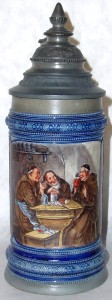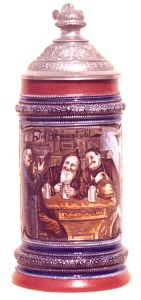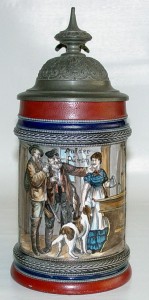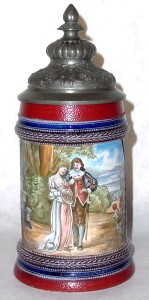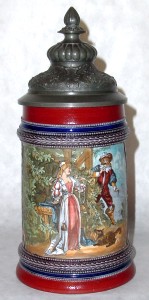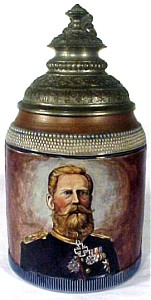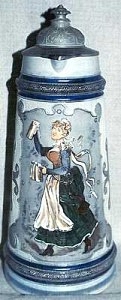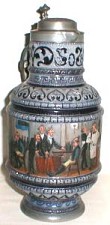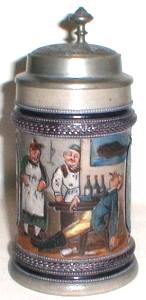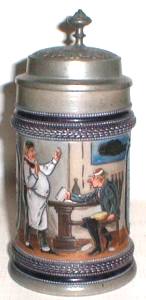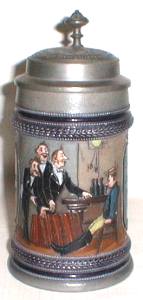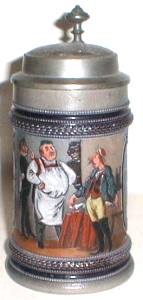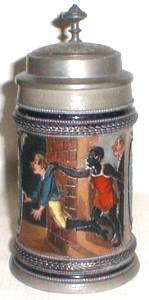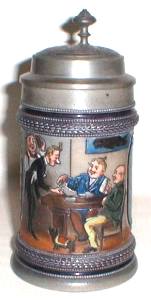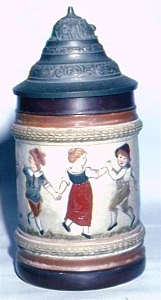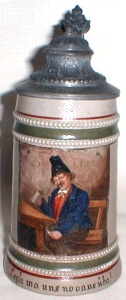|
SALT GLAZE STEINS by John McGregor Enameled, salt glazed steins, maufactured by the Freising/Hauber & Reuther factory, fall into three catagories: (1) enameled over colored under glazes, (2) enameled over salt glaze with no colored underglazes, quite often made for another mark such as LB&C, and (3) those enameled by a customer such as August Saeltzer on Freising/Hauber & Reuther blanks.
The model number 51 stein on the left, is typical of the narrow bodied character steins produced by the Freising factory between 1876 and 1878. After 1878 the body style became more robust and the narrow bodied steins were apparently warehoused until sometime after Hans Reuther joined the factory in 1882. These warehoused pieces were evidently pulled from storage and enameled in full color. When they were enameled over pre-existing colored glazes, they were given new model/decor numbers, in this case number 33, along with an "HR" decorator mark.
The same fate awaited this "Historismus" style jug as the character stein above. In 1878, Albert Hauber redesigned the entire product line and removed all the old stock to the warehouse. The original blue and grey jug is a model number 208, as is the full color piece next to it, but after enameling it was given the new model/decor number 15, seen just below the "HR" decorator mark. Quite often the enameling on these pieces is attributed to August Saeltzer, but if the piece is marked with the "HR" and a new model/decor number then it was done by Hauber & Reuther, not August Saeltzer.
The mark on the left is a factory logo. It is the type 1, incised factory logo and is found only on steinzeug (salt glazed stoneware) pieces. The mark on the right is a decorator mark and is always hand inked on steinzeug pieces. On decorator marks, the top of the "R" ALWAYS crosses over the right hand upright of the "H". See the circled portion. This mark was applied when Hauber & Reuther applied enamel over pre-existing colored glaze.
Examples of blue and grey saltglaze steins painted in full color, like the model number 383 on the right, carry only the "type 1a," incised factory logo. When the steins were initially fired, only the decorative bands and the grooves above and below them were colored with cobalt. The rest of the stein was left in the grey like the one on the left. After the piece was fired and saltglazed, the body, rim, and base could still be painted without applying the "type 5" mark because there were no colored underglazes used on those areas.
People make the mistake of looking at tapestry steins in a different light. For some reason they don't see these as enamel over salt glaze, but that is exactly what they are as evidenced by these two steins. On the left is a model number 156, tapestry stein, left in the grey and on the right, another model number 156 after enameling. Like the number 383 just above, there is no decorator mark because there were no colored under glazes covered by the enameling.
LB&C was probably located in Munich and has yet to be identified. Hauber & Reuther made nine different steins for LB&C, eight character steins and the Schlaffenland stein identified above as LB&C NMN3. All were done in blue and grey salt glaze except the three above which were enameled. LB&C steins have no model numbers, but they have the HR capacity mark and all the other typical Freising marks, as on the base below. 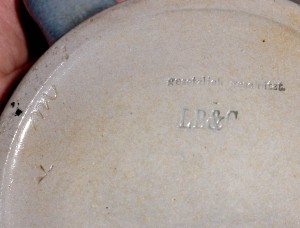
Freising was only one of many factories that sold blanks to August Saeltzer. Freising probably sold blanks to Saeltzer between 1876 and 1882. After 1882 HR began enameling their own steins which eventually led to a major paradigm change in their business, allowing them to continue in business after they lost their source for Westerwald clay in 1886.
The stein on the left, a Freising model number 208, has a capacity of 4/10 liter. The stein on the right, while always sold as a 1.0 liter, actually has a capacity of 1/2 liter. It is the massive music box base that makes it look so large. Other than their size and the line of text around the base of the enameled piece, the steins are identical. The enameled stein has no markings what so ever and for that reason, the enameling is attributed to the August Saeltzer workshop. For me, the enameled, salt glazed pieces are the ultimate Hauber & Reuther collectable. While there are undoubtedly more yet to be discovered, the steins illustrated in this article are all of those that to date, have been reported to me, or to Mike Wald before me. Except for the three pieces in this article decorated by Saeltzer, all were done by the Freising factory. This is the total sum of thiry years of searching these out. Enjoy!
|
